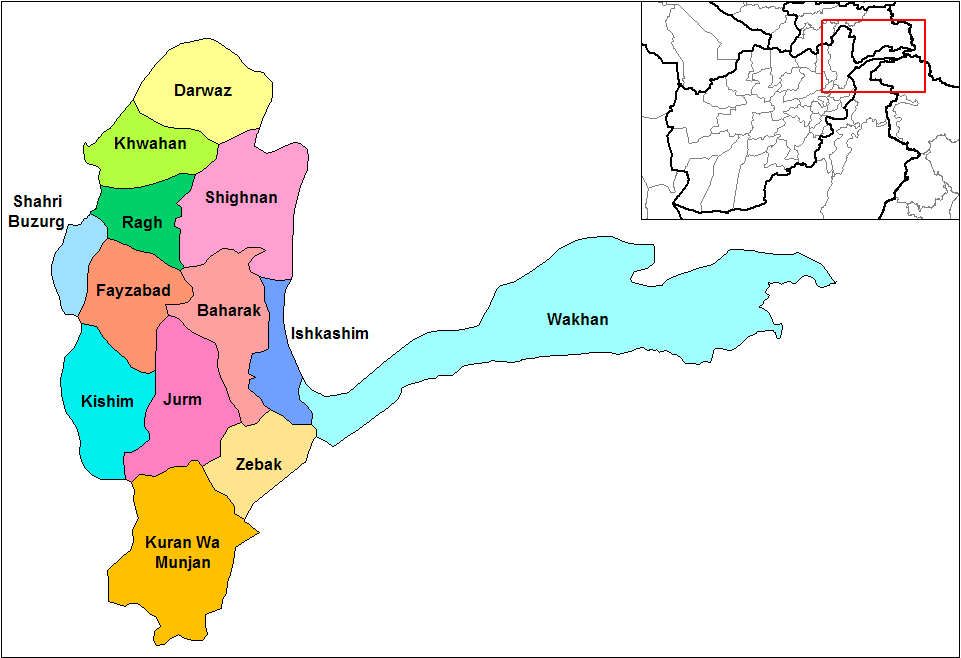|
Maiwand District
Maiwand District is situated in the western part of the Kandahar Province, Afghanistan. It borders Helmand Province to the west, Ghorak District to the north, Khakrez District to the northeast, Zhari District to the east, and Panjwayi District to the south. The population is 51,900 (2006). The district center is in Hutal, located in the central part of the district. Highway 1 runs through the center of the district and connects two of the major cities in southern Afghanistan, Kandahar and Lashkargah. Battle of Maiwand The Battle of Maiwand was fought at the village of Maiwand on 27 July 1880, during the Second Anglo-Afghan War. To this day a small fort remains from the British presence. Operation Enduring Freedom One casualty was Paula Loyd, a member of a Human Terrain System team, who was doused with a flammable liquid and set afire on November 4, 2008, and later died at Brooke Army Medical Center on January 7, 2009. [...More Info...] [...Related Items...] OR: [Wikipedia] [Google] [Baidu] |
Districts Of Afghanistan
The districts of Afghanistan, known as ''wuleswali'' (, ''wuləswāləi''; , ''wuləswālī''; ''ulasvolik''), are secondary-level administrative units, one level below Provinces of Afghanistan, provinces. The Afghan government issued its first district map in 1973. It recognized 325 districts, counting ''wuleswalis'' (districts), ''alaqadaries'' (sub-districts), and ''markaz-e-wulaiyat'' (provincial center districts). In the ensuing years, additional districts have been added through splits, and some eliminated through merges. In June 2005, the Afghan government issued a map of 398 districts. It was widely adopted by many information management systems, though usually with the addition of ''Sharak-e-Hayratan'' for 399 districts in total. It remains the ''de facto'' standard as of late 2018, despite a string of government announcements of the creation of new districts. The latest announced set includes 421 districts. The country's Central Statistics Office (CSO) and the Indepe ... [...More Info...] [...Related Items...] OR: [Wikipedia] [Google] [Baidu] |
Highway 1 (Afghanistan)
National Highway 01 or NH01, formally called the Ring Road (; ), is a two-lane road network circulating inside Afghanistan, connecting the following major cities (clockwise): Kabul, Maidan Shar, Ghazni, Kandahar, Delaram, Herat, Maymana, Sheberghan, Mazar-i-Sharif, Puli Khumri and back to Kabul. It has extensions that connect Jalalabad, Bamyan, Khost, Lashkargah, Zaranj ( Route 606), Farah, Islam Qala, Torghundi, and Kunduz. It is part of AH1, the longest route of the Asian Highway Network. National Highway 01 consists of four major sections, NH0101 to NH0104, linking the major economic centers."Application of Road Numbering System National Highway" ''The Ministry of Public Works'' (16 October 2015) History Part of National Highway 1 has been refurbished since late 2003, particularly the Kabul–Kandahar Highway, with funds provided by the United States, Saudi Arabia and others. Most work on that stretch was done by Turkish, Indian and local companies. Japanese ... [...More Info...] [...Related Items...] OR: [Wikipedia] [Google] [Baidu] |
Human Terrain System
The Human Terrain System (HTS) was a United States Army, Training and Doctrine Command (TRADOC) support program employing personnel from the social science disciplines – such as archaeology, anthropology, sociology, political science, historians, regional studies, and linguistics – to provide military commanders and staff with an understanding of the local population (i.e. the "human terrain") in the regions in which they were deployed. The concept of HTS was first developed in a paper by Montgomery McFate and Andrea Jackson in 2005, which proposed a pilot version of the project as a response to "identified gaps in S militarycommanders' and staffs' understanding of the local population and culture", such as became particularly visible during the US invasion of Iraq and Afghanistan. HTS was subsequently launched as a proof-of-concept program, run by the United States Army Training and Doctrine Command (TRADOC), in February 2007, with five HTS teams deployed between Iraq an ... [...More Info...] [...Related Items...] OR: [Wikipedia] [Google] [Baidu] |
Second Anglo-Afghan War
The Second Anglo-Afghan War (Dari: جنگ دوم افغان و انگلیس, ) was a military conflict fought between the British Raj and the Emirate of Afghanistan from 1878 to 1880, when the latter was ruled by Sher Ali Khan of the Barakzai dynasty, the son of former Emir Dost Mohammad Khan (Emir of Afghanistan), Dost Mohammad Khan. The war was part of the Great Game between the British Empire, British and Russian empire, Russian empires. The war was split into two campaigns – the first began in November 1878 with the British Raj, British invasion of Afghanistan from British Raj, India. The British were quickly victorious and forced the Amir – Sher Ali Khan to flee. Ali's successor Mohammad Yaqub Khan immediately sued for peace and the Treaty of Gandamak was then signed on 26 May 1879. The British sent an envoy and mission led by Louis Cavagnari, Sir Louis Cavagnari to Kabul, but on 3 September this mission was massacred and the conflict was reignited by Mohammad Ayub Khan ... [...More Info...] [...Related Items...] OR: [Wikipedia] [Google] [Baidu] |
Maiwand
Maiwand is a village in Afghanistan within the Maywand District of Kandahar Province. It is located 50 miles northwest of Kandahar, on the main Kandahar–Lashkargah road. The area is irrigated by the Helmand and Arghandab Valley Authority.(pdf) The Helmand Valley Project in Afghanistan: A.I.D. Evaluation Special Study No. 18 C Clapp-Wicek & E Baldwin, U.S. Agency for International Development, published December 1983 Maiwand is the birthplace of the 13th-century saint . The village is nota ... [...More Info...] [...Related Items...] OR: [Wikipedia] [Google] [Baidu] |
Battle Of Maiwand
The Battle of Maiwand (Dari: نبرد میوند, Pashto: د ميوند جگړه), fought on 27 July 1880, was one of the principal battles of the Second Anglo-Afghan War. Under the leadership of Ayub Khan, the Afghan forces defeated a much smaller British force consisting of two brigades of British and Indian troops under Brigadier-General George Burrows, albeit at a high price: between 2,050 and 2,750 Afghan tribal militamen were killed, and probably about 1,500 wounded. British and Indian forces suffered 1,200 dead. Prelude Before the battle, the campaign had gone well for the British. They had defeated Afghan tribesmen at Ali Masjid, Peiwar Kotal, Kabul, and the Battle of Ahmed Khel, and they had occupied numerous cities and towns, including Kandahar, Dakka, and Jalalabad. Ayub Khan, Sher Ali Khan's younger son, who had been holding Herat during the British operations at Kabul and Kandahar, set out towards Kandahar with a small army in June, and a brigade under Brigad ... [...More Info...] [...Related Items...] OR: [Wikipedia] [Google] [Baidu] |
Lashkargah
Lashkargāh (; ), historically called Bost or Boost (), is a city in southwestern Afghanistan and the capital of Helmand Province. It is located in Lashkargah District, where the Arghandab River merges into the Helmand River. The city has a population of 201,546 as of 2006. Lashkargah is linked by major roads with Kandahar to the east, Zaranj on the border with Iran to the west, and Farah and Herat to the north-west. It is mostly very arid and desolate. However, farming does exist around the Helmand and Arghandab rivers. Bost Airport is located on the east bank of the Helmand River, five miles north of the junction of the Helmand and Arghandab rivers. Because of the trading hubs, it is Afghanistan's second largest city in size, after Kabul and before Kandahar. After several weeks of fighting in the Battle of Lashkargah, the city was captured by the Taliban on 13 August 2021, becoming the fourteenth provincial capital to be seized by the Taliban as part of the wider 2021 Tal ... [...More Info...] [...Related Items...] OR: [Wikipedia] [Google] [Baidu] |
Kandahar
Kandahar is a city in Afghanistan, located in the south of the country on Arghandab River, at an elevation of . It is Afghanistan's second largest city, after Kabul, with a population of about 614,118 in 2015. It is the capital of Kandahar Province and the centre of the larger cultural region called Loy Kandahar. The region around Kandahar is one of the oldest known areas of human settlement. A major fortified city existed at the site of Kandahar, probably as early as 1000–750 BC,F.R. Allchin (ed.)''The Archaeology of Early Historic South Asia: The Emergence of Cities and States'' (Cambridge University Press, 1995), pp.127–130 and it became an important outpost of the Achaemenid Empire in the 6th century BC.Gérard Fussman"Kandahar II. Pre-Islamic Monuments and Remains", in ''Encyclopædia Iranica'', online edition, 2012 Alexander the Great laid the foundation of what is now Old Kandahar (in the southern section of the city) in the 4th century BC and named it Alexandria ... [...More Info...] [...Related Items...] OR: [Wikipedia] [Google] [Baidu] |
Panjwayi District
Panjwayi (; also spelled Panjwaye, Panjwaii, Panjway, Panjawyi, Panjwa'i, or Panjwai) is a district in Kandahar Province, Afghanistan. It is located about west of Kandahar. The district borders Helmand Province to the southwest, Maywand District to the west, Zhari District to the north, Arghandab, Kandahar and Daman districts to the east and Reg District to the south. Panjwayi was reduced in size in 2004 when Zhari District was created out of the northern part of it, on the northern side of the Arghandab River, which now forms the northern boundary. The district center is Bazar-i-Panjwayi, located in the northern part of the district near the Arghandab River. The district population was around 77,200 in 2006, most of which are peasants and poorly educated due to unavailability of schools. The area is irrigated by the Helmand and Arghandab Valley Authority. War in Afghanistan Panjwayi was the site of continual fighting and emplacements of improvised explosive devices ( ... [...More Info...] [...Related Items...] OR: [Wikipedia] [Google] [Baidu] |
Provinces Of Afghanistan
The provinces of Afghanistan ( ''Wilayah, wilāyat'') are the primary administrative divisions. Afghanistan is divided into 34 provinces. Each province encompasses a number of Districts of Afghanistan, districts or usually over 1,000 villages. Provincial governors played a critical role in the reconstruction of the Afghan state following the creation of the new government under Hamid Karzai. According to international security scholar Dipali Mukhopadhyay, many of the provincial governors of the western-backed government were former warlords who were incorporated into the political system. Provinces of Afghanistan Administrative The following table lists the province, capital, number of districts, UN region, region, ISO 3166-2:AF code and license plate code. Demographic The following table lists the province, population in 2024, area in square kilometers and population density. Regions of Afghanistan The following tables summarize data from the demographic ... [...More Info...] [...Related Items...] OR: [Wikipedia] [Google] [Baidu] |
Zhari District
Zhari (, ) is a district in Kandahar Province, Afghanistan. Alternative spellings include Zheley (due to transliteration from Pashto), Zharey, Zharay, Zheri, or Zheray. The district was created in 2004 from land that was formerly part of Maywand and Panjwai districts. The population is estimated at 80,700 (2010). Geography Zhari lies on the north bank of the Arghandab River, which runs east to west through Kandahar Province. The general area is sometimes referred to as the Arghandab Valley. The built-up and farmed area of Zhari is approximately 30 km east to west by 8 km north to south, between the river and Highway 1. Most buildings are single-story mud structures, with narrow, winding roads and walkways. The exceptions are the grape-drying huts, which are larger buildings, as high as 20m, scattered throughout the countryside. Grapes, opium poppies and cannabis (for hashish) are the most common crops. The farmlands are irrigated by a complex system of wa ... [...More Info...] [...Related Items...] OR: [Wikipedia] [Google] [Baidu] |








